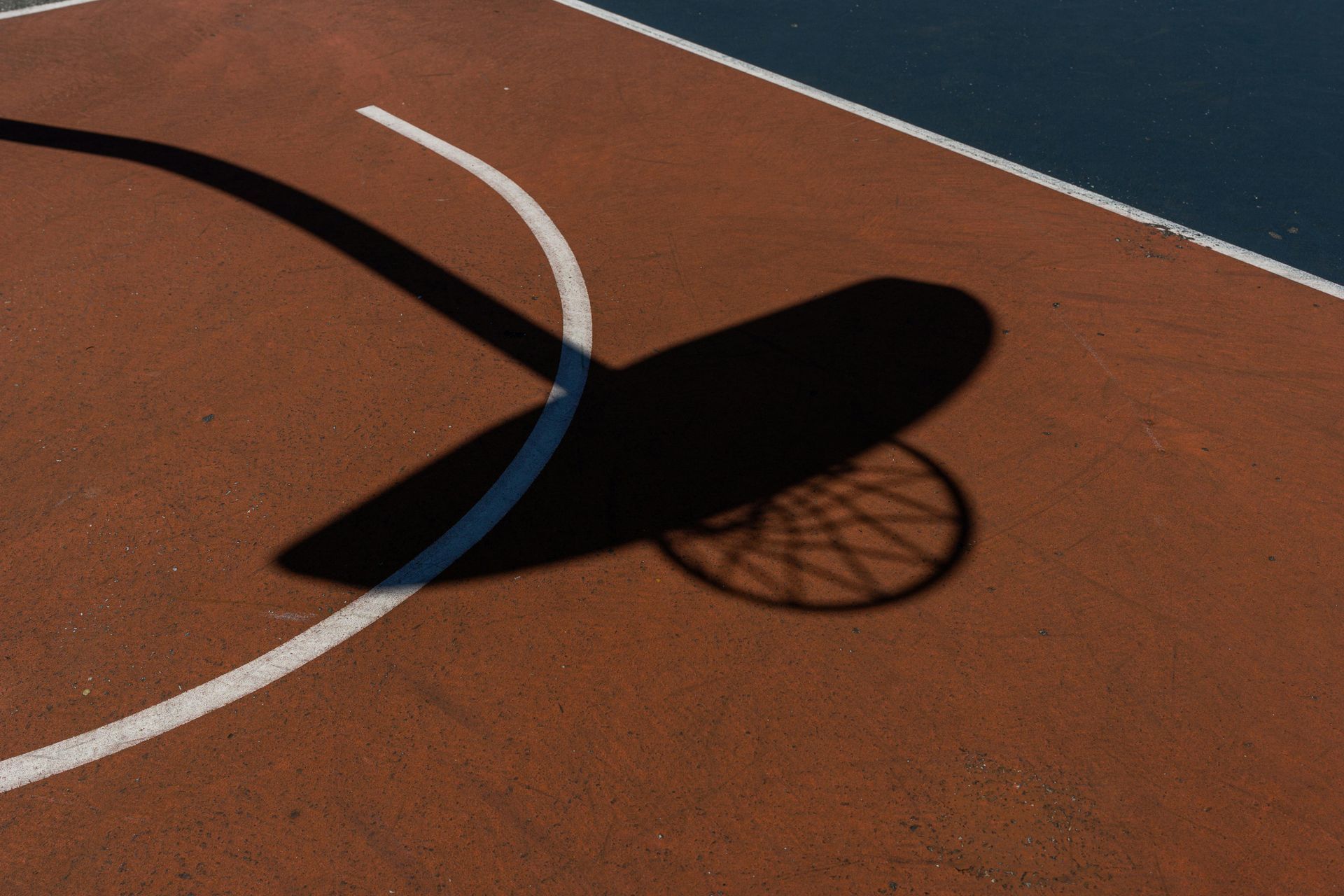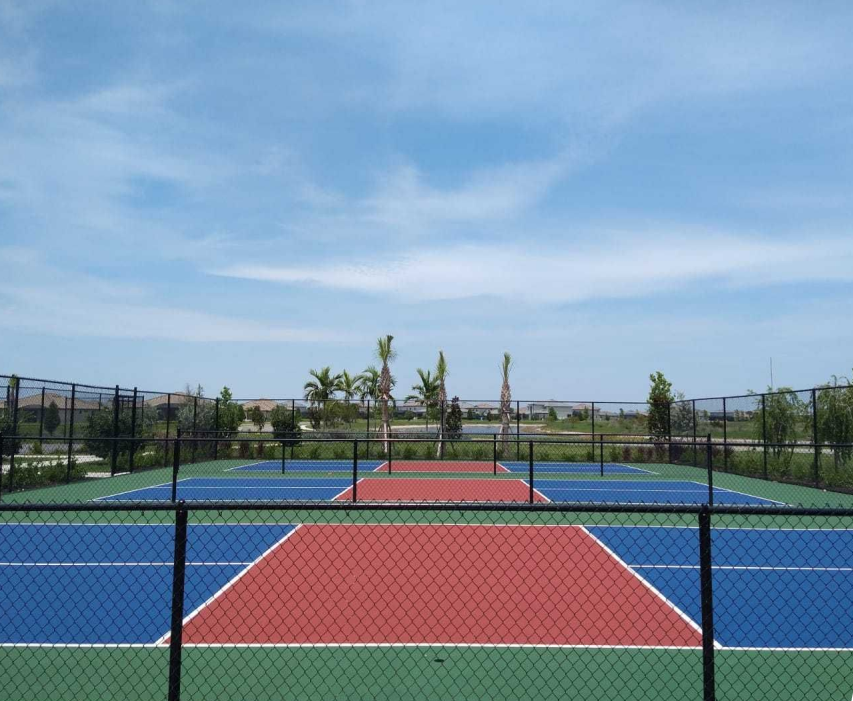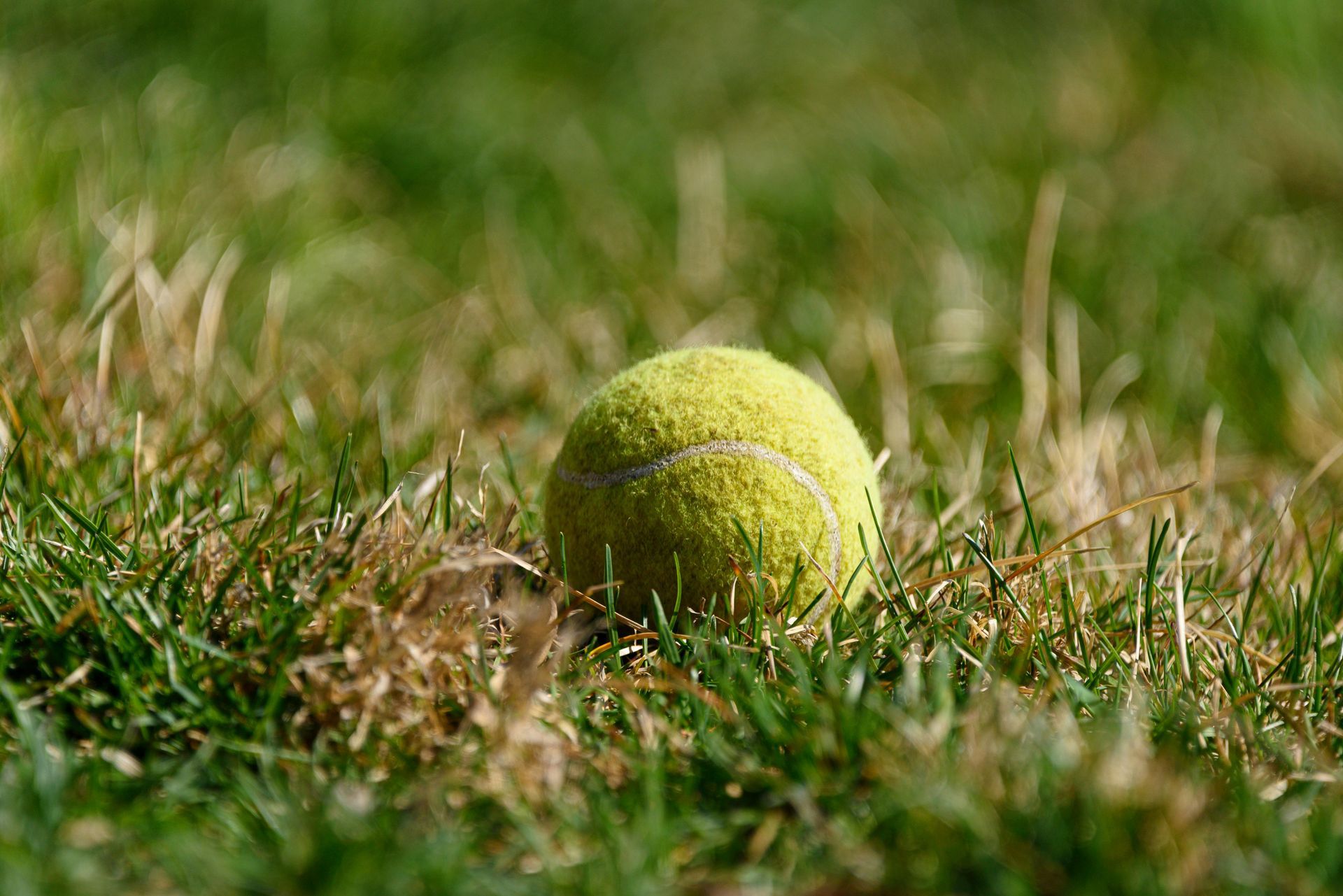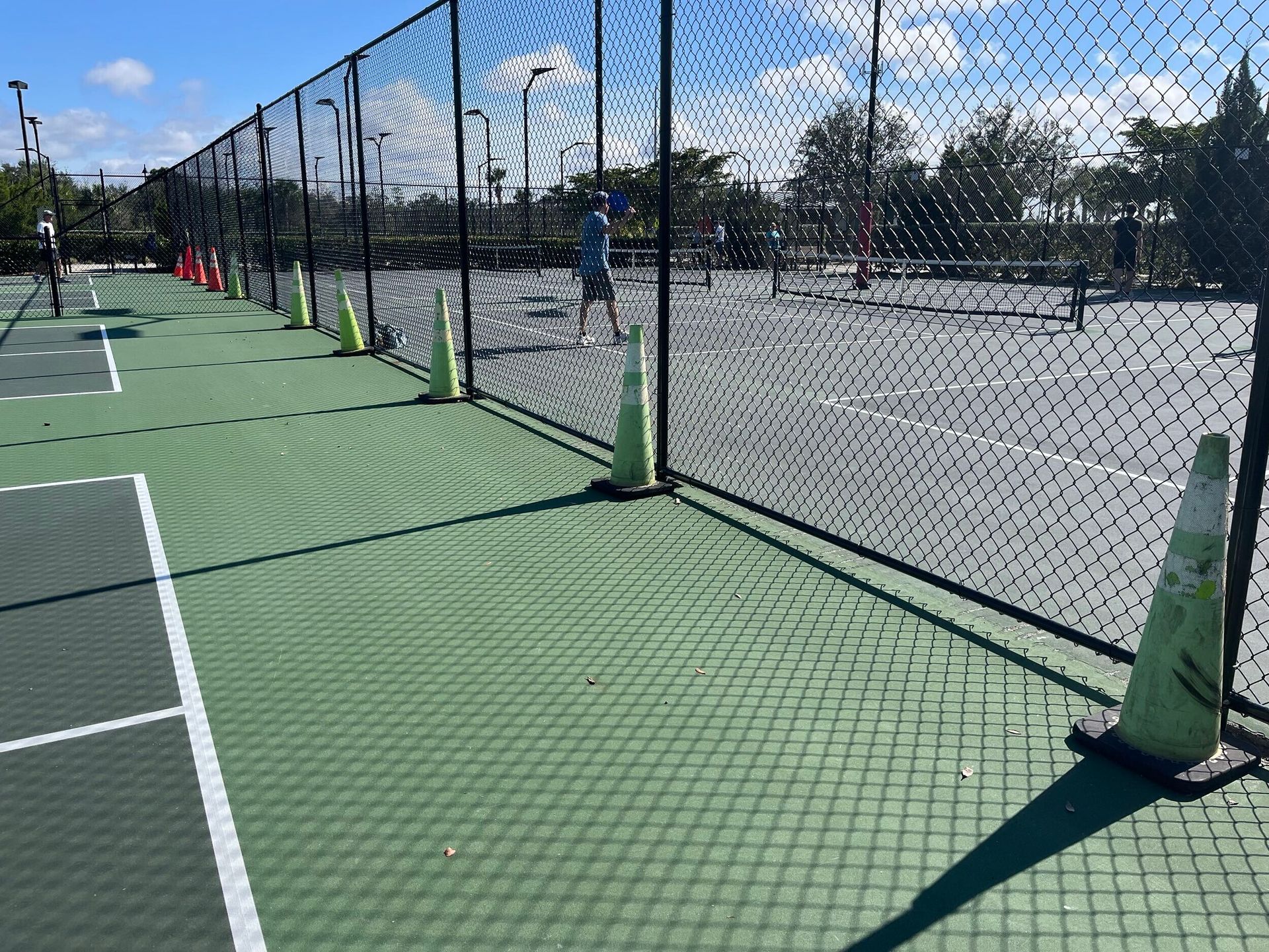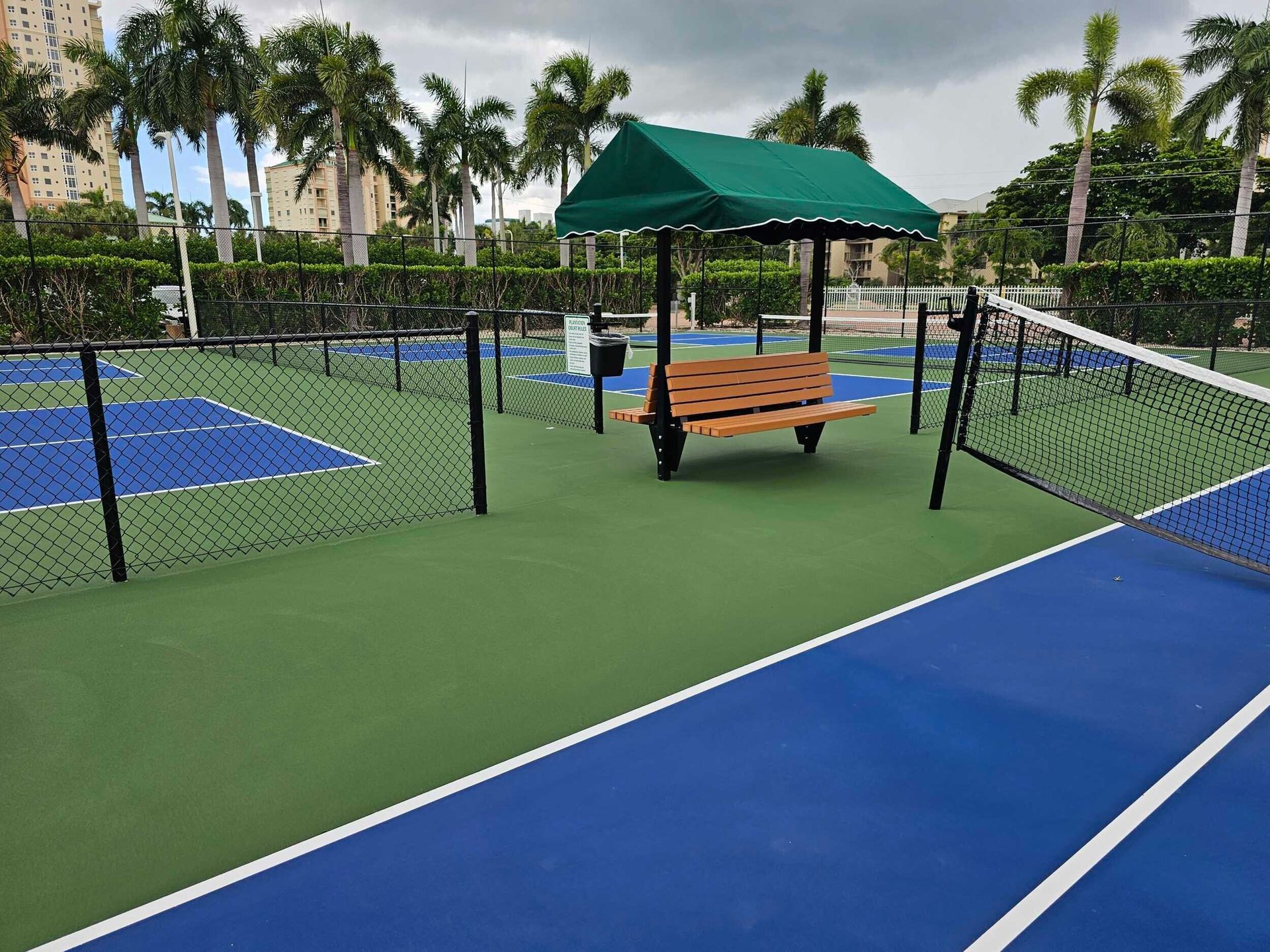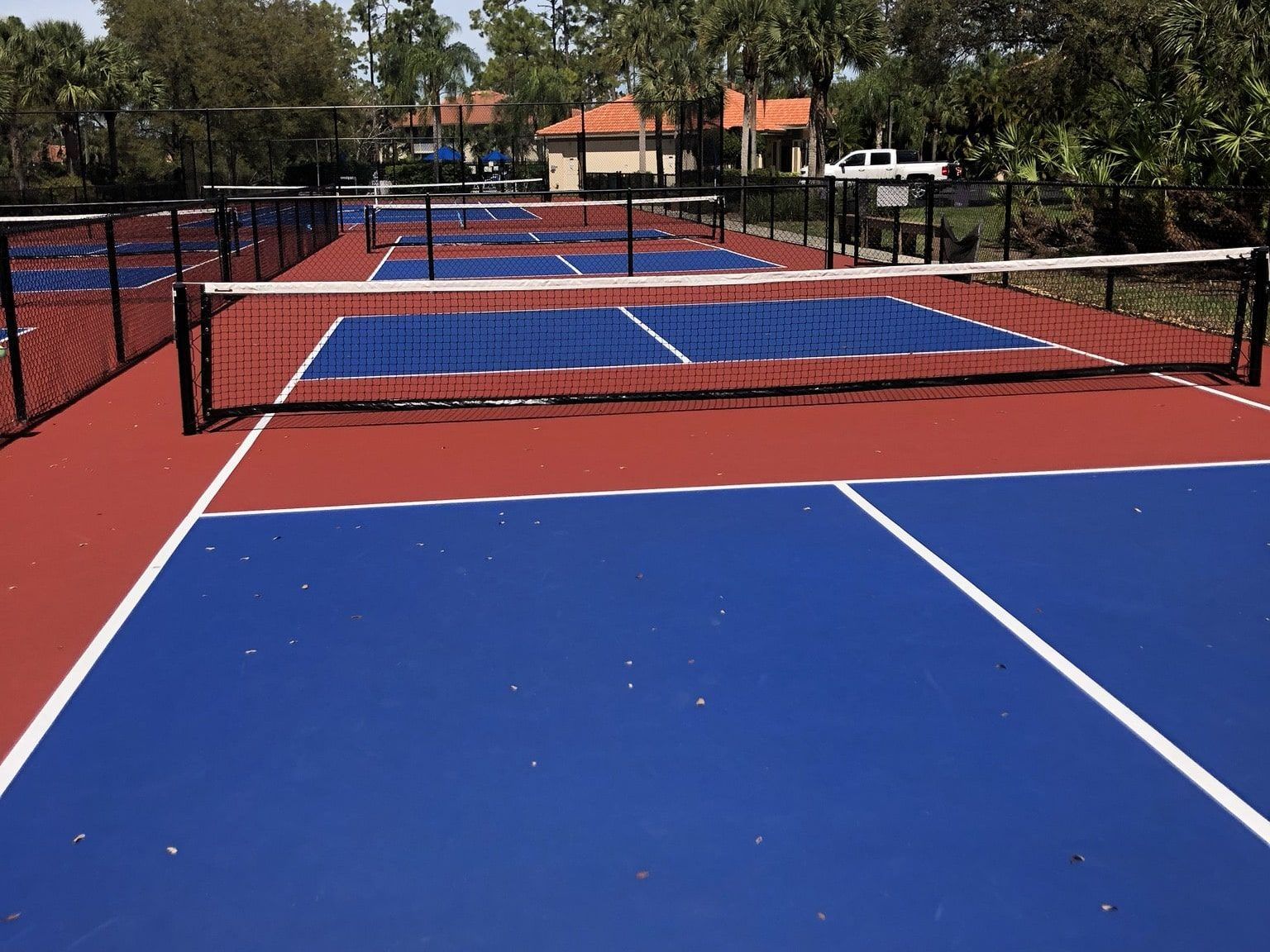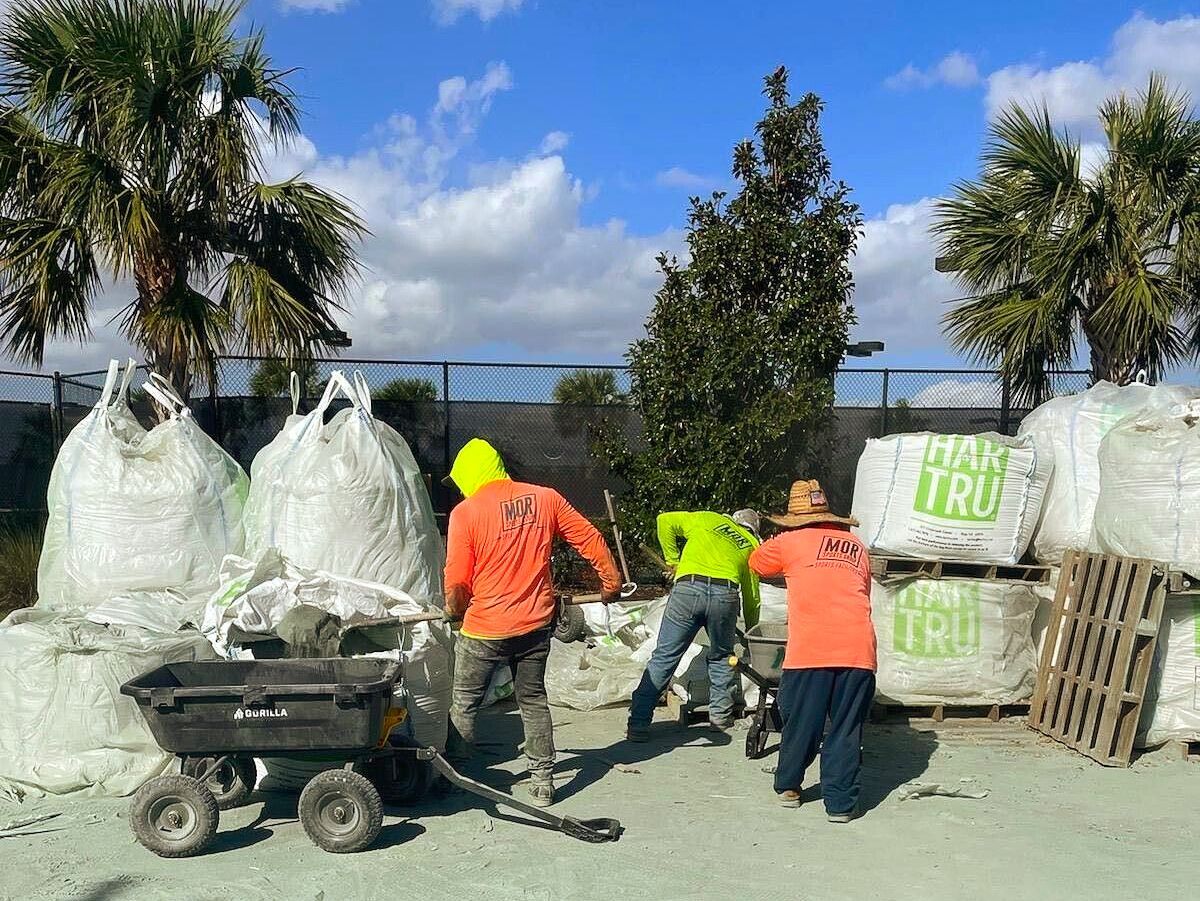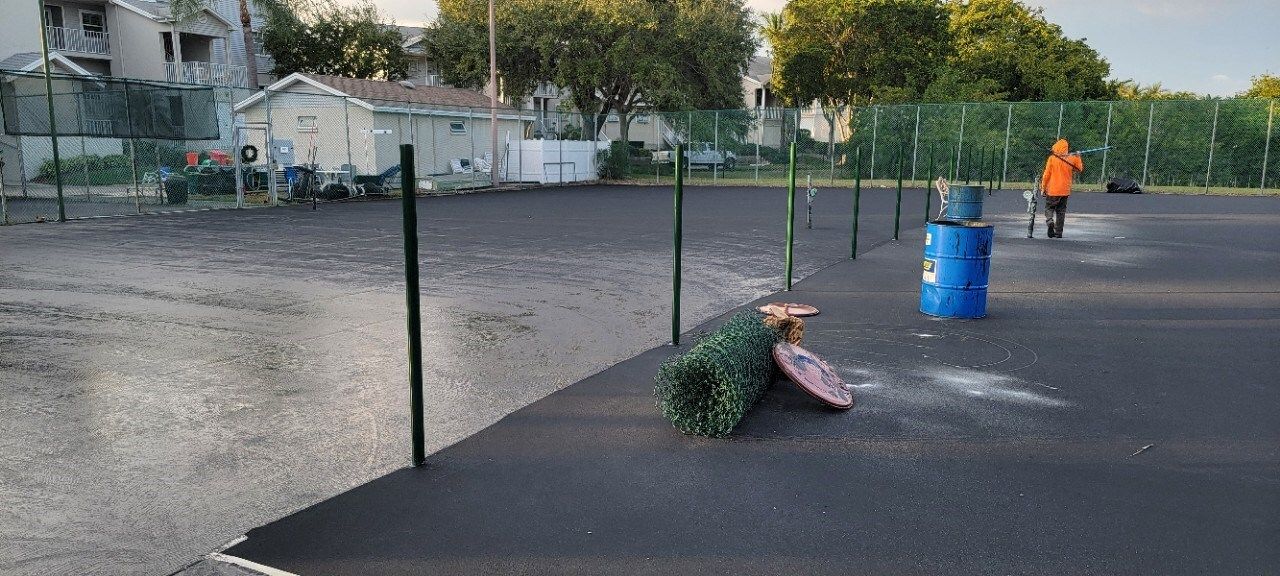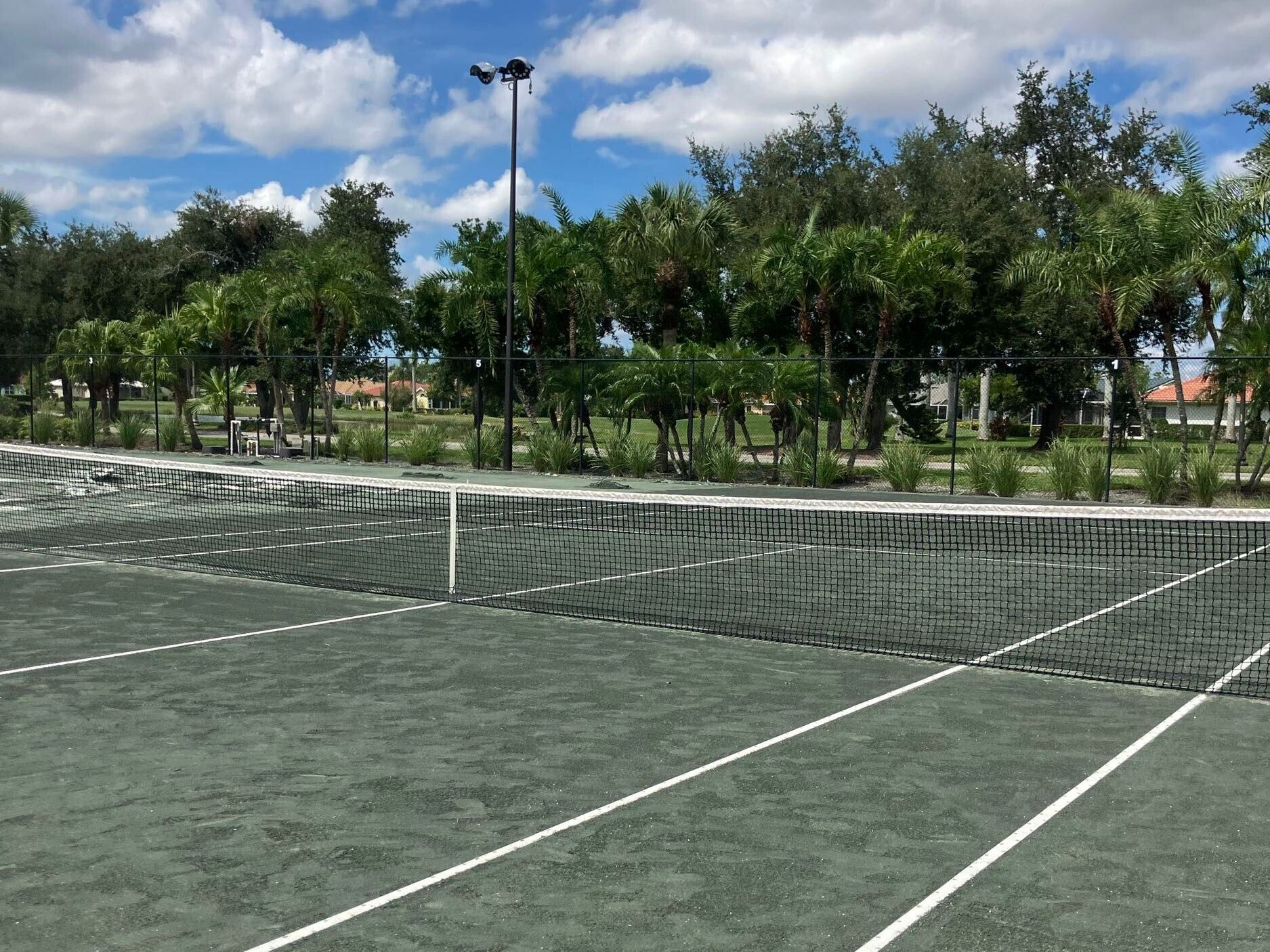Choosing the Right Resurfacing Material for Your Tennis Court

Resurfacing a tennis court is a big move. It’s not just about fixing cracks or giving it a facelift—it’s about upgrading how the game plays, how long the court lasts, and how much maintenance you’ll be signing up for.
Understanding your options is key. Let’s explore what matters most when selecting the right resurfacing material for your tennis court.
Why Tennis Court Resurfacing Matters
A freshly resurfaced court isn’t just more attractive—it’s safer and performs better. Over time, sun exposure, weather, and play wear down a court. You might notice fading lines, small cracks, puddles after rain, or a slippery surface. These aren’t just cosmetic issues—they can affect gameplay and increase injury risk.
Keeping the court in top shape helps you:
- Protect your investment
- Ensure consistent ball bounce and traction
- Extend the life of your base court
- Provide a safer, more enjoyable experience for players
If your court is over five years old or showing signs of wear, it might be time to resurface.
A Closer Look at Your Resurfacing Options
Choosing a resurfacing material isn’t just about picking what looks good; it’s about performance, budget, maintenance, and how the surface fits into your long-term plans. Here’s a breakdown of the most popular resurfacing options, what they bring to the table, and who they’re best suited for.
Acrylic Hard Courts
Acrylic hard courts are the most widely used tennis surfaces in the U.S., and for good reason. These courts are built on asphalt or concrete and topped with a multi-layer acrylic coating that creates a smooth, durable surface with excellent playability.
They deliver consistent bounce and medium to fast playing speed. This makes them great for all-around players and multi-use facilities. They’re also highly versatile, holding up well in various weather conditions—from intense sun to seasonal rains.
- Maintenance: While they're one of the lowest-maintenance options available, occasional sweeping, pressure washing, and resurfacing every 4 to 8 years will keep them in great shape.
- Best for:
- Schools and universities
- Public parks
- Recreational and residential courts
- Year-round outdoor use
- Limitations: They can be a bit tough on joints due to their firmness, especially for older players or those with injuries. Cushioning systems are available but may increase the cost.
Clay Courts
Clay courts, made from crushed brick or shale, are known for their slow speed and high bounce. They create a strategic game environment, allowing longer rallies and encouraging more tactical play. This surface is easier on the body, making it popular among older or injury-prone players. The ability to slide also reduces impact stress. In warm, dry climates, clay can thrive and look beautiful.
- Maintenance: They require daily care—watering, brushing, and rolling to maintain a level surface and prevent cracks. Regular top-dressing and seasonal upkeep are also essential to performance.
- Best for:
- Tennis academies and training facilities
- Clubs focused on skill development and technique
- Regions with dry, warm climates
- Limitations: High maintenance needs and weather sensitivity. Wet conditions can render the court unplayable, and in cold climates, freezing can damage the surface.
Grass Courts
Grass courts are the most traditional and prestigious surface in tennis. They’re known for their high-speed game and low, unpredictable bounce. A true hallmark of professional play, they provide a visually stunning and luxurious experience.
It’s a soft surface that’s easy on joints, and it adds a touch of heritage to any facility. Grass courts encourage serve-and-volley play and reward fast reflexes.
- Maintenance: High maintenance is an understatement. They need mowing at least three times a week, consistent watering, aeration, fertilizing, and rolling to keep the surface even. Rain can turn them into mud pits, and dry patches need constant attention.
- Best for:
- Elite-level clubs
- Private estates
- Professional events with dedicated grounds crews
- Limitations: Extremely labor-intensive and expensive to maintain. It is not recommended for facilities without year-round groundskeeping support.
Synthetic Grass
Synthetic grass gives you the best of both worlds: the aesthetic of natural grass with far less maintenance. These courts use synthetic fibers and are often filled with sand or rubber to stabilize the surface and mimic natural ball bounce. It performs consistently in all weather, has excellent drainage, and provides a medium-speed game. It’s easier on joints than hard courts and looks lush year-round.
- Maintenance: Relatively low maintenance. Occasional brushing and cleaning are enough to keep it in shape. Infill levels may need topping up every few years.
- Best for:
- Multi-sport complexes
- Clubs looking for a grass-like experience
- Recreational facilities with limited maintenance resources
- Limitations: The bounce is slightly lower than real grass or hard courts, which can take some adjustment. It may heat up in full sun, depending on the material used.
Modular Tile Systems
Modular tile courts consist of interlocking tiles made from durable plastic laid over a hard sub-base. These tiles can be installed over concrete, asphalt, or even old court surfaces, making them a fast and flexible option.
They offer excellent shock absorption and are easier on players’ joints. Plus, they’re available in various colors and are easy to customize for branding or aesthetics. Tiles expand and contract with the weather, helping prevent cracking.
- Maintenance: Minimal. Debris should be removed regularly, and occasional pressure washing keeps them looking fresh. Individual tiles can be replaced if damaged without redoing the entire surface.
- Best for:
- Indoor or outdoor multi-sport courts
- Facilities needing quick installation or temporary surfaces
- Locations with extreme temperature swings
- Limitations: They tend to be more expensive upfront and may not offer the same ball bounce feel as traditional surfaces, depending on the product.
Rubber and Carpet Courts
Rubber courts are made from recycled materials and provide a soft, grippy surface ideal for reducing injury risk. They’re popular in schools, community gyms, and rehab facilities.
Carpet courts are often textile-based and roll out like indoor turf. They’re quick to install and offer medium-fast play but aren’t widely used in competitive settings anymore.
- Maintenance: Both are relatively easy to care for. Rubber requires sweeping and occasional deep cleaning, while carpet courts need to be vacuumed and occasionally replaced depending on wear.
- Best for:
- Indoor gyms and multi-use spaces
- Seasonal or temporary installations
- Older adults or therapy-oriented programs
- Limitations: Not suitable for outdoor use. Carpet, in particular, has fallen out of favor in pro circuits due to injury risks and wear patterns.
Cost and Longevity
Every resurfacing material has its price tag—and not just at installation. Some cost less upfront but require frequent maintenance, while others have a higher price point but last longer and demand less attention.
- Hard courts are moderately priced with long-term value, thanks to their durability.
- Clay courts have a lower initial cost but rack up expenses in daily care.
- Grass courts are the most expensive to install and maintain but provide a luxury experience.
- Synthetic grass hits a good middle ground—reasonable cost with manageable upkeep.
- Modular tiles can be pricey to install, but they’re virtually maintenance-free and incredibly durable.
Before you commit, make sure you’re looking at the whole picture: installation, repairs, resurfacing intervals, and day-to-day care.
Sustainability
There’s growing interest in more sustainable court materials. Synthetic and acrylic surfaces tend to be more eco-friendly in the long run since they don’t require water, fertilizers, or harsh chemicals. Some systems are even made from recycled materials
Want to explore sustainable options further? The Green Building Council is a great place to learn more about environmentally conscious materials and certifications like LEED.
How to Choose the Right Surface for Your Needs
Now that you know the strengths and limitations of each surface, how do you decide what’s actually right for your court? The best resurfacing material isn’t a one-size-fits-all answer—it depends on your priorities, how your court will be used, and what kind of maintenance you're comfortable with.
Here’s a quick way to evaluate your options:
Consider the Primary Use
Ask yourself: who’s using the court most often?
- For schools and public parks: Acrylic hard courts are a strong choice due to their durability, lower upkeep, and versatility for all player types.
- For training academies or facilities focused on skill development: Clay courts provide longer rallies and are easier on the joints.
- For premium or private clubs: Grass or synthetic grass can deliver a more upscale or classic tennis experience.
- For indoor or multi-purpose spaces: Modular tiles, carpets, or rubber courts are often more practical and adaptable.
Think About Climate
Your location plays a massive role in how your court holds up over time.
- Hot, dry regions: Acrylic and synthetic grass perform well and resist cracking or fading.
- Rain-prone or humid climates: Synthetic grass and modular tiles are great because they offer fast drainage and resist mold or warping.
- Cold, freeze-thaw regions: Avoid clay or natural grass, as they can deteriorate quickly in harsh winter conditions.
Factor in Maintenance
Maintenance is where many court owners miscalculate.
If you don’t have the time, staff, or resources to regularly care for your court, steer clear of clay or grass. Synthetic grass and acrylic hard courts are much easier to keep in good shape and have fewer maintenance demands throughout the year.
Set a Realistic Budget
The cost should include more than just installation. Look at the full lifecycle cost—what will it cost to keep the surface playable year after year?
- Want long-term value with less upkeep? Acrylic or modular tile systems are worth the investment.
- Looking for short-term savings but okay with high upkeep? Clay might be an option.
- Ready to invest in luxury and appearance? Natural grass is the most premium and high-maintenance choice.
Why Work with Experts
Choosing a surface is one thing—installing it correctly is another. That’s where professionals come in. Mor Sports Group specializes in tennis court resurfacing and construction. With years of experience and access to high-performance materials, they’ll help you assess your space, climate, and goals to match the best surface to your needs.
They don’t just handle the installation; they guide you through the planning, help you maintain your court afterward, and offer long-term solutions for performance and durability. From a single court resurfacing to a full-scale facility upgrade, their team makes the process smooth and efficient.
Conclusion
A well-matched surface enhances gameplay, reduces maintenance headaches, and gives players a great experience for years to come. Take time to assess your needs, think about your climate and budget, and talk to experienced pros. The right surface is the one that fits your goals and makes your court a place where the game thrives.
